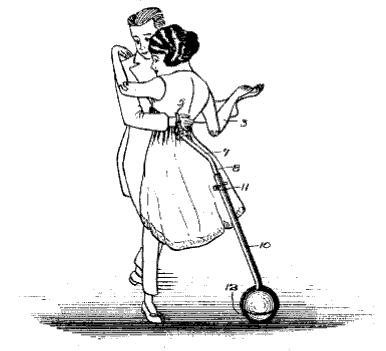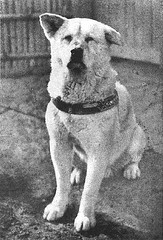
Sad and creepy, yes, but it saves money on corsages.
Sidney Feist patented this “figure for ballroom dancing practice” in 1921.

Sad and creepy, yes, but it saves money on corsages.
Sidney Feist patented this “figure for ballroom dancing practice” in 1921.
On Aug. 10, 1628, as hundreds of Swedish spectators looked on, the new royal warship Vasa crossed the Stockholm waterfront, set her sails, foundered, and sank. She had covered less than 1 nautical mile.
During the Battle of Öland in 1676, the Swedish flagship Kronan was heeling to port when commander Baron Lorentz Creutz said, “In the name of Jesus, make sure that the cannon ports are closed and the cannon made fast, so that in turning we don’t suffer the same fate as befell the Vasa.” They didn’t; they did.
Epimenides, a Cretan, says that all Cretans are liars. This seems to create a paradox: If his statement is true, then it’s false, and vice versa.
The idea recurs in Paul’s epistle to Titus: “One of themselves, even a prophet of their own, said, The Cretians are alway liars, evil beasts, slow bellies. This witness is true.”
But Aristotle, being Aristotle, sees right through the difficulty: “There is no impossibility in supposing that the man habitually lies, but that in this particular instance (in the proclamation of his own mendacity) he is telling the truth.”
“No man was ever wise by chance.” — Seneca
Punch has favored the world with the following song, sung before her Britannic Majesty by a Chinese lady. It looks rather difficult at first; but if the reader studies it attentively, he will see how easy it is to read Chinese:–
Ohc ometo th ete asho pwit hme,
Andb uya po undo f thebe st,
‘Twillpr oveam ostex cellentt ea,
Itsq ua lit yal lwi lla tte st.‘Tiso nlyf oursh illi ngs apo und,
Soc omet othet eama rtan dtry,
Nob etterc anel sewh erebefou nd,
Ort hata nyoth er needb uy.
— Charles Carroll Bombaugh, Gleanings for the Curious from the Harvest-Fields of Literature, 1890
A conundrum from Henry Ernest Dudeney, Modern Puzzles, 1926:
Dora Crackham one morning produced a slip of paper bearing the jumble of figures shown in our illustration. She said that a young mathematician had this poser presented to him by his betrothed when she was in a playful mood.

“What am I to do with it?” asked George.
“Just interpret its meaning,” she replied. “If it is properly regarded it should not be difficult to decipher.”
What did she mean?
Said the chemist, “I’ll take some dimethyloximidomesoralamide
And I’ll add just a dash of dimethylamidoazobensaldehyde;
But if these won’t mix,
I’ll just have to fix
Up a big dose of trisodiumpholoroglucintricarboxycide.”
Mr. Evelyn mentions a Dutch boy, eight or nine years old, who was carried about by his parents as a show. He had about the iris of one eye the words Deus meus, and about the other Eloihim, in the Hebrew characters. How this was done by artifice none could imagine, and his parents affirmed he was born so.
— Sketches of Imposture, Deception, and Credulity, 1845

In 1924, university professor Hidesamuro Ueno brought his dog, Hachiko, to Tokyo. Every morning Hachiko saw his master off at the front door, and every evening he greeted him at the nearby train station.
The professor died in May 1925, but the faithful dog still went to the station every day to wait for him.
He kept this up for 10 years.
The dog became a national sensation in 1932, when this story was published, and he’s since been the subject of books and movies. Today a bronze statue stands at Shibuya Station, where he kept his vigil.
The Rev. Ralph William Lyonel Tollemache-Tollemache (1826–1895) got a bit carried away in naming his children:
Lyulph’s name forms an acronym, LYONEL THE SECOND. In Finnegans Wake, Joyce parodied this with Helmingham Erchenwyne Rutter Egbert Crumwall Odin Maximus Esme Saxon Esa Vercingetorix Ethelwulf Rupprecht Ydwalla Bentley Osmund Dysart Yggdrasselmann — whose initials spell HERE COMES EVERYBODY.